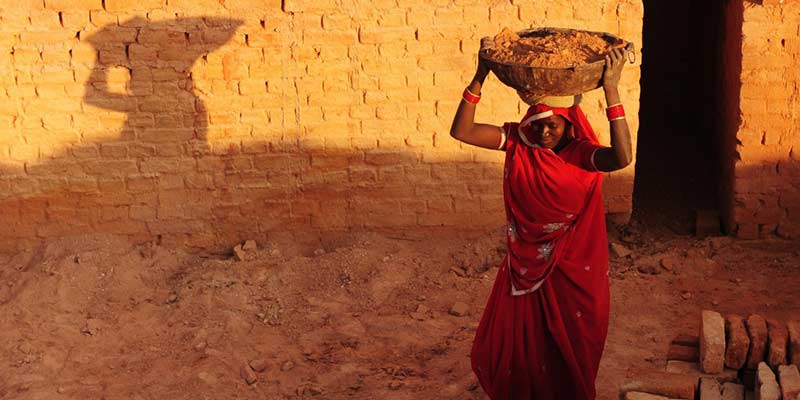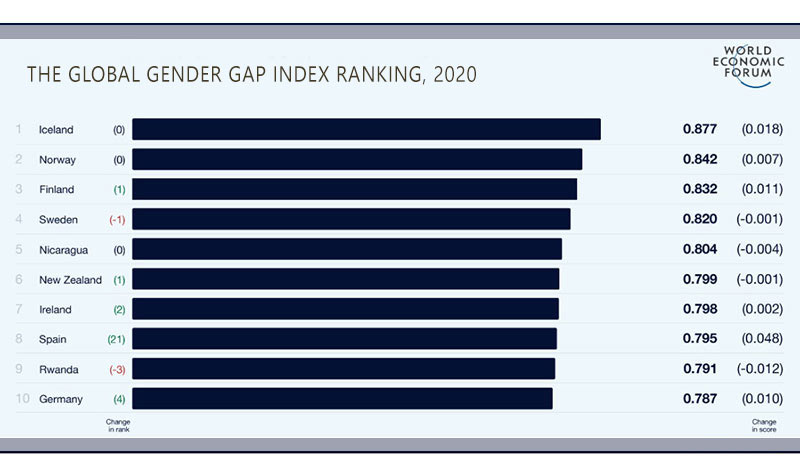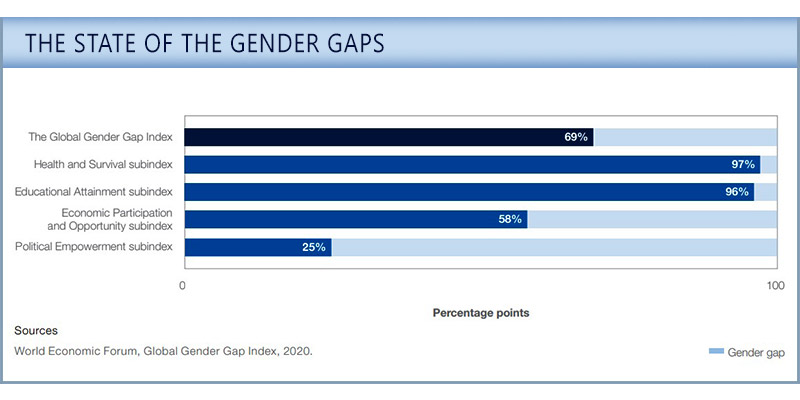- India
- Dec 17
India slips down the gender gap ladder
India has slipped four places to 112 globally in terms of gender gap amid widening disparity in terms of women’s health and survival and economic participation - the two areas where the country is now ranked in the bottom five, an annual survey showed on December 17.
While Iceland remains the world’s most gender-neutral country, India has moved down the ladder from the 108th position last year on the World Economic Forum’s Gender Gap Report to rank below countries such as China (106), Sri Lanka (102), Nepal (101), Brazil (92), Indonesia (85) and Bangladesh (50).
Nordic countries continue to lead the way to gender parity and Iceland is followed by Norway, Finland and Sweden in the top four. In the top 10, they are followed by Nicaragua, New Zealand, Ireland, Spain, Rwanda and Germany.
Yemen is ranked the worst (153), while Iraq is 152nd and Pakistan 151st. The most-improved countries were Albania, Ethiopia, Mali, Mexico and Spain.
Geneva-based WEF, an international organisation for public-private cooperation, said this year’s improvement can largely be ascribed to a significant increase in the number of women in politics.
How is the index prepared?
Gender parity has a fundamental bearing on whether or not economies and societies thrive. Developing and deploying one-half of the world’s available talent has a huge bearing on the growth, competitiveness and future-readiness of economies and businesses worldwide.
The index’s rankings offer an effective means to benchmark progress. They are designed to create global awareness of the challenges that gender gaps pose, as well as the opportunities that emerge when action is taken to reduce them.
Now in its 14th year, the Global Gender Gap Report benchmarks 153 countries on their progress towards gender parity in four dimensions: Economic Participation and Opportunity, Educational Attainment, Health and Survival and Political Empowerment.
What are the key findings?
Globally, the average (population-weighted) distance completed to parity is at 68.6 per cent, which is a further improvement since last edition. To date, there is still a 31.4 per cent average gender gap that remains to be closed globally.
Projecting current trends into the future, the overall global gender gap will close in 99.5 years, on average, across the 107 countries covered continuously since the first edition of the report.
Across the four sub-indexes, on average, the largest gender disparity is the Political Empowerment gap. Despite being the most improved dimension this year (driving the overall positive performance), only 24.7 per cent of the global Political Empowerment gap has been closed in 2020.
With regard to the Political Empowerment sub-index, 108 countries of the 149 covered in both current and last year’s editions have improved their overall scores, driven mainly by a significant increase in the number of women in Parliament compared to the last assessment. Notably, in some countries such as Latvia, Spain and Thailand, the number of women in Parliament has increased substantially. Nonetheless, to date only 25 per cent of these 35,127 global seats are occupied by women and only 21 per cent of the 3,343 ministers are women. In some countries, women are not represented at all.
In addition, over the past 50 years, in 85 of the 153 countries covered by this report, there has never been a female head of state.
Time required to close the gap
Lack of progress in closing the Economic Participation and Opportunity gap leads to an extension of the time it will be needed to close this gap. At the slow speed experienced over 2006-20, it will take 257 years to close this gap.
The second area where gender gaps will take longest to close is Political Empowerment. This year’s evolution speeds up the pace of progress towards parity, yet it will still take 94.5 years - even at this faster rate - to close the gender gap.
Third, the Educational Attainment gender gap is on track to be closed over the next 12 years, mainly thanks to advancements in some developing countries.
The Health and Survival gender gap remains virtually unchanged since last year. Globally, the time to fully close this gap remains undefined, while gender parity has been already fully achieved in 40 countries among the 153 covered in the report.
How did India fare?
The WEF had published its first gender gap report in 2006, when India was ranked relatively higher at 98th place.
Since then, India’s rank has worsened on three of four metrics used for the overall ranking. While India has improved to 18th place on Political Empowerment, it has slipped to 150 on Health and Survival, to 149 in terms of Economic Participation and Opportunity and to 112 place for Educational Attainment.
The WEF said economic opportunities for women are extremely limited in India (35.4 per cent), Pakistan (32.7 per cent), Yemen (27.3 per cent), Syria (24.9 per cent) and Iraq (22.7 per cent).
It also named India among countries with very low female representation on company boards (13.8 per cent), while it was even worse in China (9.7 per cent).
On Health and Survival, four large countries - Pakistan, India, Vietnam and China - fare badly with millions of women not getting the same access to health as men, the WEF said.
It also flagged abnormally low sex ratios at birth in India (91 girls for every 100 boys) and Pakistan (92/100).
The WEF said India has closed two-thirds of its overall gender gap, but the condition of women in large fringes of India’s society is precarious and the economic gender gap runs particularly deep.
Since 2006, the gap has significantly widened and India is the only country among the 153 countries studied where the economic gender gap is larger than the political one.
Only one-quarter of women, compared with 82 per cent of men, engage actively in the labour market - one of the lowest rates globally (145th).
Furthermore, the female estimated earned income is mere one-fifth of the male income, again among the world’s lowest (144).
Women account for only 14 per cent of leadership roles (136) and 30 per cent of professional and technical workers.
“Violence, forced marriage and discrimination in access to health remain pervasive. The situation and the trend are more positive in terms of gender gaps in education. But a large difference persists for literacy rate. Only two-thirds of women are literate compared with 82 per cent of men,” the WEF said.
India ranks high on Political Empowerment. But, female political representation today is low as women make up only 14.4 per cent of Parliament (122nd rank globally) and 23 per cent of the Cabinet (69th), the report said.
Manorama Yearbook app is now available on Google Play Store and iOS App Store



